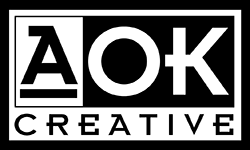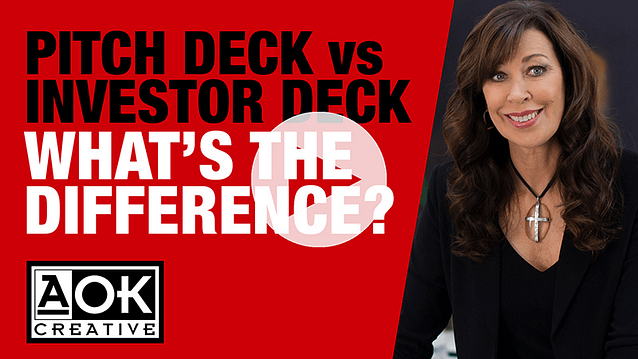For instance, what is the difference between a pitch deck and an investor deck. Both of them are powerful tools if used correctly. Once you’re across the distinctions, you can utilise both more effectively.
Read on to find out more, or watch the video below for more information.
AN INVESTOR DECK SHOULD STAND ALONE
You’ve contacted a potential investor and you’re over the moon because they’re open to learning more about your new-to-market idea. Yea! They've asked you to send more information in the form of a pitch deck via email. Here’s where the confusion begins. What the heck do they really want? They want a presentation that doesn’t need any commentary for it to make sense. What they are really asking you for is an investor deck.
Firstly, think of your investor deck like a tour of your business idea. Unfortunately, your potential investor is about to take a tour of your business idea without you. Right there you can see how important a well thought investor deck will need to be. Your investor deck will need to be self-explanatory and give them a clear picture of your business without boring or bombarding them with too much information.
Keep in mind that investors have read a tonne of poorly constructed pitches from entrepreneurs that don’t focus on the critical question that investors are forever asking about each presentation they see, “Why should I invest in this particular business?”
It’s fair to say that investors aren’t expecting much from your investor deck and are surprisingly cynical. If you can send them an overview of your business that is still compelling reading and also focuses on your growth metrics and traction, you will be on the road to a warm response that may result in a real shot at funding.
YOUR PITCH DECK IS NOT A REWRITE
Tweaking your investor deck and then using it for your pitch deck may seem like a great time saver and an obvious approach. You may even think that your pitch deck might benefit from repeating points and information to ensure investors remember them.
But this rehashing is a mistake, and it’s a common one businesses make when they are pitching and presenting. You see, an investor deck puts most of its focus on the information investors need to make a decision about investing in your business, while a pitch deck’s key message is all about getting an investor to be interested in your business in the first place.
A pitch deck is an overview of your business idea and an engaging teaser. It’s your platform to add a personal touch and develop credibility with an investor. And just as importantly, introduce yourself and your passion into the business mix.
What you also have to remember is that your investor may have already looked through your investor deck at length, so when you get to present your pitch deck, you really need to change gears and be prepared with a different presentation. There is nothing more boring for an investor than a business presenting their pitch using the same deck they sent to introduce themselves.
YOUR PITCH DECK IS PRESENTED IN PERSON
Unlike your investor deck, your pitch deck allows you to inject far more emotion into your story. Great slides, powerful words will make your presentation far more compelling and memorable.
But you’ve still got another box to tick to make your pitch deck really come to life. In a word? Passion. Remember that your passion is just as important to your pitch deck as the points in your slides. So, don’t be afraid to let some of your excitement show through. Being authentically enthusiastic about an idea you believe in can be inspiring and infectious. So inject some passion into your pitch deck and allow your investors to dream big alongside you.
If you would like to learn more about how you can do that, check out my other video How to Improve Your Pitch Deck (BE PASSIONATE, POWERFUL, PERSUASIVE). Whether it’s your investor deck of your pitch deck adding visual power to your presentations will always help your pitch.
Now while your presentations should include words and facts and even charts, use them sparingly. Cramming too much into each slide and this information overload could suffocate your presentation. Instead, use some well-chosen words and powerful images and great commentary. Then the main points will cut through and be remembered by investors.
CHALLENGE YOUR START-UP STATEMENTS
Remind yourself that many potential investors are looking at a lot of pitches each week. If you hit them with too much filler information, they may lose lose their focus. Once their minds have wandered off it will be very hard to get them back on message. So, when writing both your investor deck and your pitch deck, put your statements and points through a bit of a grilling. Ask yourself “What’s the point I am making here and why does it matter?” This will help you identify information that is really on message and help you ID unnecessary intel, which can be pruned. This will help you streamline both your investor deck and pitch deck so that you cut out any unhelpful, unnecessary and distracting filler.
I hope that was helpful for you. Knowing the difference between an investor deck and a pitch deck will definitely increase your chances of impressing an investor.
Pulling together a powerful investor deck and pitch deck can seem daunting but don’t forget, you are following your dreams so keep on pitching with passion.
You are just one pitch away from success!
Share this blog with people that matter to you.


